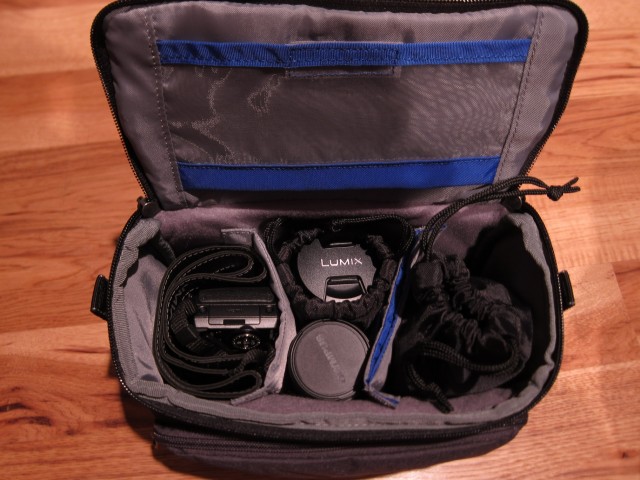As mentioned previously, I am looking for a new laptop. The closest to ideal new laptop will likely be a Dell XPS 14 ultrabook when the series is refreshed with Haswell core processors. However, those are not available yet. Before heading off to WordCamp Chicago this year, I decided I would not be lugging the Vostro 1400 with me. Since Lenovo was running some pretty good outlet deals, I picked up the ideapad s405 for pretty cheap. Yes, this laptop only meets the first two requirements I set forth in “What I Look for in a Laptop”.
The Hardware
The s405 is an “entry level”/”value” segment ultrabook class laptop. However, it can’t qualify as an ultrabook as it has an AMD APU rather than Intel CPU.
- AMD A6-4455M APU (2.1GHz, 2.6GHz turbo) 17W with HD 7500G
- 8GiB 1.35v DDR3-1333 single channel (upgrade, more on this later)
- 256GB Samsung 840 Pro (upgrade)
- 802.11bgn (Ralink RT3090 based)
- 32 Wh Li-ion battery (up to 5hrs according to Lenovo)
- 14 inch glossy display (1366 x 768)
- AMD Radeon HD 7500G Graphics (256 shaders, 327MHz, 424MHz turbo)
The build quality is adequate. It’s not build like a tank, unlike the Vostro 1400, but then again it is much lighter and thinner. It does flex a little when opening the lid, and will flex a little if held from either front corner.
Like a few other ultrabooks, rather than facing up at you, the speakers face down towards the surface the s405 is sitting on. This works quite well in delivering adequate sound for such a small device. This scheme delivers at least 10X better sound than that from the Vostro 1400.
Performance wise, while the A6-4455M is slower than the C2D x9000 in the Vostro 1400, it is fast enough for day to day tasks. It has no problem streaming 1080p H.264 video over WiFi (something that can’t be said about some Pentium mobile chips from only two years ago). It took about a weekend to get Funtoo up and running (with KDE4 and fglrx working), which is about right when dealing with unfamiliar hardware.
Caveat Emptor
Unlike the Vostro 1400, the s405 does not have individual compartments for accessing and upgrading components. Instead the bottom of the laptop must be removed (there are screws hidden under the rubber feet), which while not difficult is a bit of a pain when diagnosing hardware issues.
While the memory is upgradeable, not all memory is compatible. Worst of all, memory may pass several rounds of checks on memtest86 and Microsoft’s memory tester and still cause issues in the OS. Case in point, just before heading off to WordCamp Chicago I had installed a 8GiB stick of 1.35v DDR3-1600 CL11 memory (Patriot branded stick with Micron chips). While in Chicago the laptop would BSoD anywhere between 5 and 55 minutes of use (I ran Windows 8.1 while down there which isn’t a bad OS).
After returning from Chicago, I narrowed down the issue to being with the memory (replacing it with the stock memory resolved the BSoD issues). While 4GiB is probably enough memory for this laptop, I wanted more for running VMs (with Vagrant) and using for RAMdisks when compiling. Crucial happens to have 8GiB sticks of 1.35v DDR3-1333 CL9 memory that they guarantee compatibility with the s405. Thus far, it appears that the guaranteed compatible memory from Crucial is in fact compatible with the s405 (have not had any issues with it).
The s405 only supports 7mm high drives. The included 500GB WD Scorpio Blue is very slow, so it was replaced with the only 7mm drive I had on hand (a Samsung 840 pro that was supposed to go into my workstation).
Finally, for those who do not know, Lenovo (like IBM before them and HP) have device white-lists for WiFi cards. So upgrading the card in this laptop may not be easily done (will update when I have an extra mini-pcie WiFi card on hand to test).
Other Thoughts
Battery life, while more is better, and this laptop could use more, is not too bad. While waiting for my delayed flight back from WordCamp Chicago, I was able to run the s405 for 3 hours while playing music off of a SD card and writing some code and documents. This only brought the battery down to 50% (according to Windows 8.1), while I don’t think 6 hours will be the typical battery life, it should be possible.
The trackpad is nice and large, but frankly I do not like trackpads. Within Windows the Synaptics drivers do a good job at palm detection and prevent the cursor from jumping to random areas when typing. In Linux, the Synaptics drivers are pretty good, but require calibration/configuration tweaking to get the palm detection working properly.
-John Havlik
[end of transmission, stay tuned]

